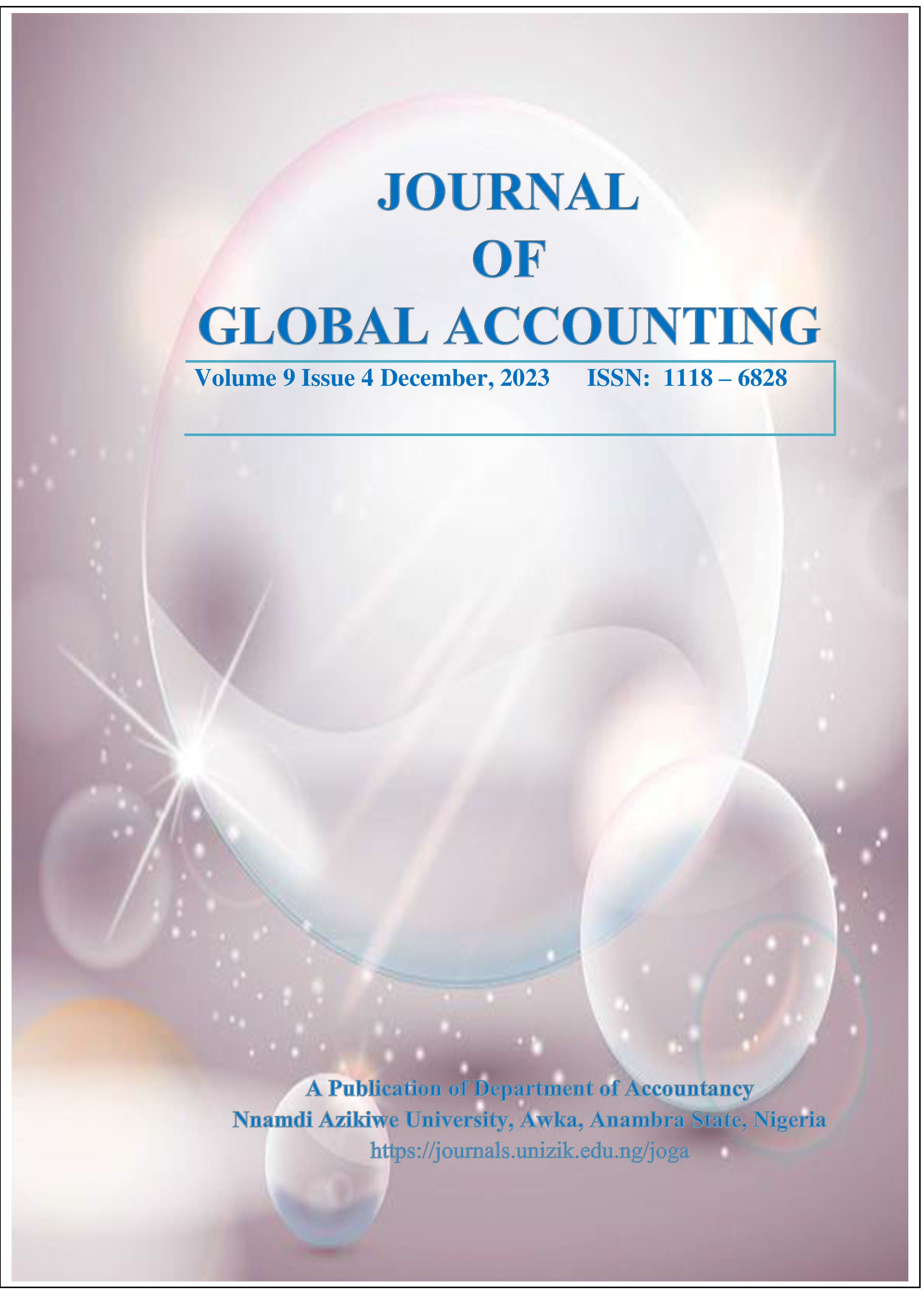EFFECT OF TAXATION ON ECONOMIC GROWTH IN NIGERIA
Keywords:
Company Income Tax, Economic Growth, Petroleum Profit Tax, Taxation, Value Added TaxAbstract
This study assessed the effect of taxation on economic growth in Nigeria. There is the issue of under assessment of tax payers, poor administration of tax and connivance of tax payers and collectors leading to collecting less amount than expected. These amongst others are challenges hampering the adequate tax revenue generation to government that could help fund infrastructures that will spur economic growth. The specific objectives were to assess: the effect of petroleum profit tax (PPT), company income tax (CIT), value added tax (VAT), education tax (EDUTAX) and gas income (GASINC) on gross domestic product (GDP) of Nigeria. Taxation proxies were PPT, CIT, VAT, EDUTAX and GASINC, while the dependent variable was GDP. Five hypotheses guided the study and were tested at 5% level of significance. The research design was ex-post-facto, while descriptive statistics and multiple regression were used to analyze the data. The regression output showed that PPT had negative but significant effect on GDP; CIT had positive and non-significant effect on GDP; VAT had positive and significant effect on GDP; EDUTAX had positive but non-significant effect on GDP while GASINC had negative and non-significant effect on GDP. The prob (F-stat) was 0.000192 while R-squared value was 0.942871. The study recommended among others that the government should improve petroleum profit tax administration, blockage of leakages and judicious use of the revenue in productive sectors of the economy. Also, the government should properly harness the income from company tax as a macro-economic tool for economic growth. Furthermore, the government should continue to sustain the value added tax collection and investment measures so as to maintain its positive and significant effect on gross domestic product.
Downloads
Published
Issue
Section
License
Copyright (c) 2023 Journal of Global Accounting

This work is licensed under a Creative Commons Attribution-NonCommercial 4.0 International License.
Articles submitted to JOGA should not have been published or are currently under review by another Journal. Kindly see the guide for the preparation of the manuscript for details. Successful submission of articles by author(s) for publication clearly implies that the work is not an infringement of any existing copyright warranty as JOGA reserves the right to be indemnified by the author(s) where any breach of such warranty is proven. For ease of dissemination and to ensure proper policing of use, papers and contributions become the legal copyright of JOGA once published unless otherwise agreed.
Permission clearance should be obtained by the author(s) where applicable for the use of any content of interest not originally created by them. This must be done before the submission of the article to JOGA. Failure to do so may lead to a lengthy delay in publication, as JOGA is unable to publish any article which has permissions pending. Thus, the rights JOGA requires are:
- Non-exclusive right to reproduce the material in the article or book chapters.
- Print and electronic rights.
- To use the material for the life of the work (for instance, there should be no time restrictions on the re-use of material).
Where tables, figures or excerpts of more than 250 words are reproduced from another source, it is expected that:
- Author(s) should obtain the necessary written permission in advance from any third-party owner of the copyright for the use in print and electronic formats of any of their text, illustrations, graphics, or other material in their manuscript. Permission must also be cleared for any minor adaptations of any work not originally created by the author(s). The author (s) should not assume that any content freely available on the web is free to use.
- Where the author adapts a significant number of any material, the author(s) must inform the copyright holder of the original work.
- Author obtains any proof of consent statements
- The author must acknowledge figure(s) and content adopted or adapted in work utilizing source(s) and further capture them in the list of references.

